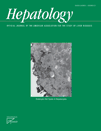Seven cases of autoimmune hepatitis that developed after drug-induced liver injury†
Potential conflict of interest: Nothing to report.
We read with great interest the article by Björnsson et al.1 on the topic of 22 cases of drug-induced autoimmune hepatitis (DIAIH). Although DIAIH is considered relatively rare, Lucena et al.2 recently reported four cases diagnosed with AIH on the second episode of drug-induced liver injury (DILI). With the findings in their studies, Björssen et al. concluded that a significant proportion of patients with AIH have DIAIH, whereas Lucena et al. concluded that second episodes of DILI are more likely to be associated with features of AIH. We have also recently encountered seven cases with intriguing clinical courses, which were diagnosed as DILI but features of AIH became apparent later despite discontinuation of drugs, suggesting a different pattern of the etiology.
Patient characteristics are shown in Table 1. In each case, liver dysfunction had not been documented before pharmacotherapy, and treatment was promptly suspended without changing to any other drugs when elevated levels of serum aminotransferase were detected. Liver dysfunction improved after discontinuation of causal drugs, but relapsed later in all cases despite continued cessation of drugs. Interestingly, antinuclear antibody (ANA) titer and immunoglobulin (Ig)G levels were significantly increased at relapse compared to first onset. Histological examinations were performed at relapse in three cases, revealing portal inflammation and interface hepatitis. AIH was diagnosed in all cases because every one of them met the criteria for at least “probable AIH” according to the international scoring system.3 Steroid therapy improved liver dysfunction and no cases of relapse have been seen.
| Patient (Age/Sex) | ALT at First Onset (IU/l) | IgG at First Onset (mg/dL) | ANA titer at First Onset | Time to Relapse (Days) | ALT at Relapse (IU/L) | IgG at Relapse (mg/dL) | ANA Titer at Relapse | Causative Drug |
|---|---|---|---|---|---|---|---|---|
| 56 F | 1617 | 1570 | <40 | 300 | 95 | 2751 | 80 | Ofloxacin |
| 20 M | 1018 | 1170 | 80 | 30 | 280 | 1720 | 160 | Diclofenac sodium |
| 67 F | 992 | 1370 | 320 | 500 | 715 | 1670 | 2560 | Herbal medicine |
| 31 F | 567 | 1480 | <40 | 40 | 149 | 1770 | 160 | Cefaclor |
| 52 F | 1170 | 1863 | <40 | 100 | 230 | 2580 | 320 | Loxoprofen sodium hydrate |
| 68 F | 418 | 1698 | <40 | 20 | 218 | 2237 | 80 | Herbal medicine |
| 66 F | 808 | 1460 | <40 | 50 | 622 | 2320 | 40 | Benzbromarone |
One of the most important and interesting features of these cases is that ANA titers or serum IgG levels increased during the course. Although determining whether true DIAIH or drug-induced unmasking of true AIH was present in each of these seven cases was difficult, we think these drugs were responsible for the pathogenesis of AIH to some extent. Although the precise etiological mechanism of DIAIH has not been elucidated yet, we can speculate that the variations in their developing patterns are due to the different metabolic activity and immunological reactions. We think that a wider range of drugs has the potential to cause AIH, and incidence of AIH with a drug-related etiology is more frequent than we have previously thought. In cases of DILI, careful follow-up will be needed, keeping in mind that AIH can develop even after normalization of liver enzymes. Furthermore, establishment of the diagnostic criteria and therapeutic strategy for DIAIH will be needed.
References
Kazushi Sugimoto M.D., Ph.D.*, Takeshi Ito M.D., Ph.D.*, Norihiko Yamamoto M.D., Ph.D.*, Katsuya Shiraki M.D., Ph.D.*, * Department of Gastroenterology and Hepatology, Mie University School of Medicine, Mie, Japan.




